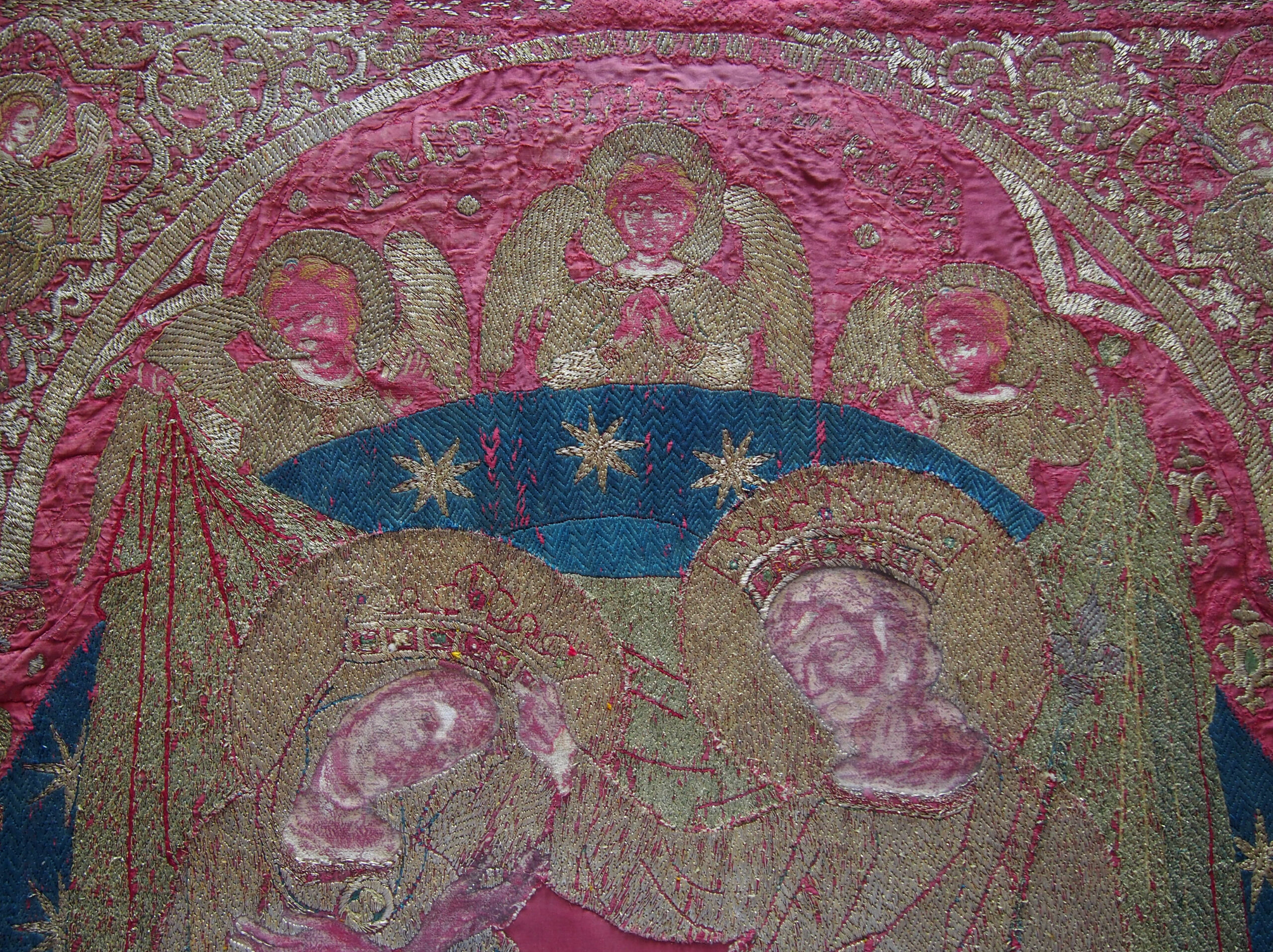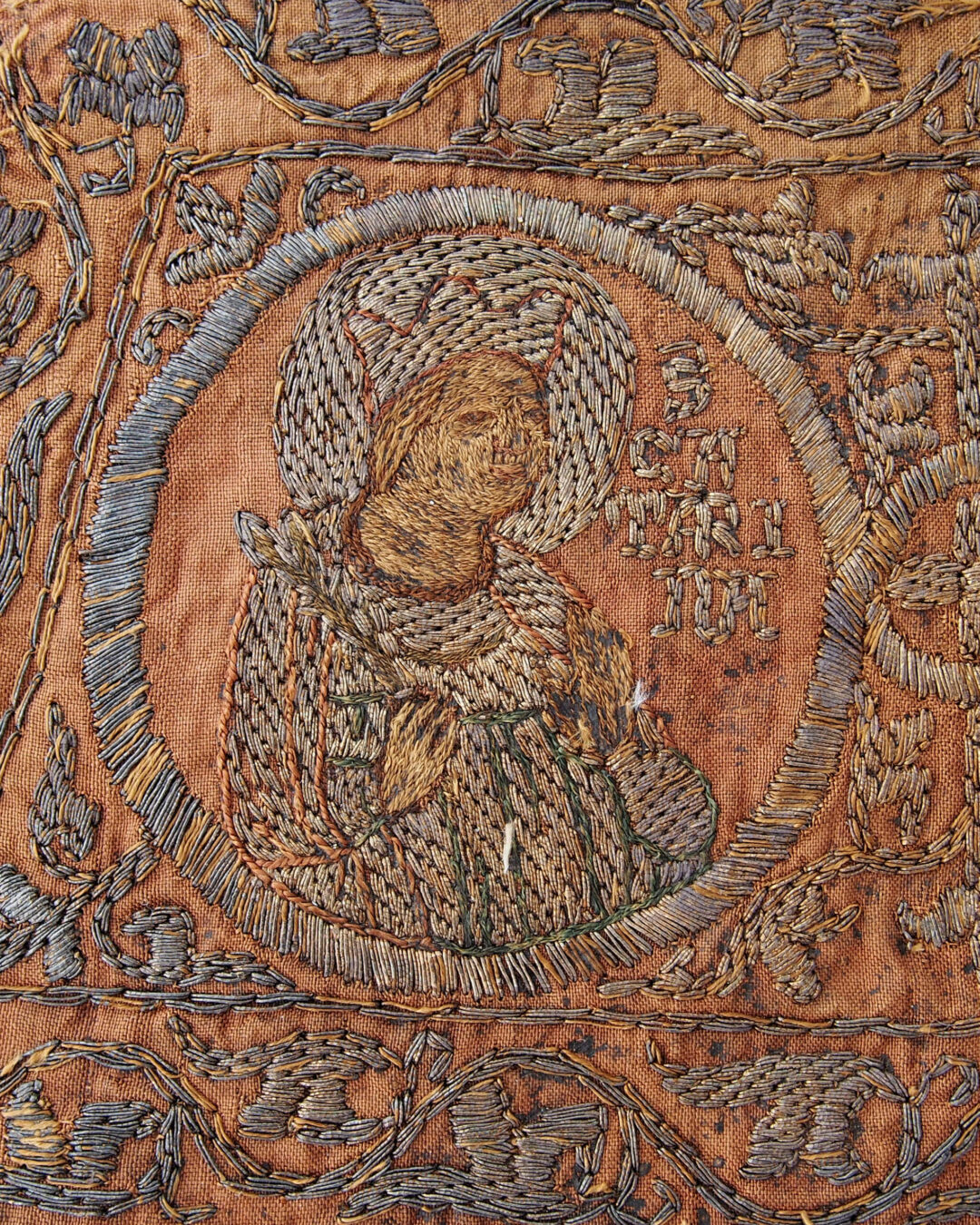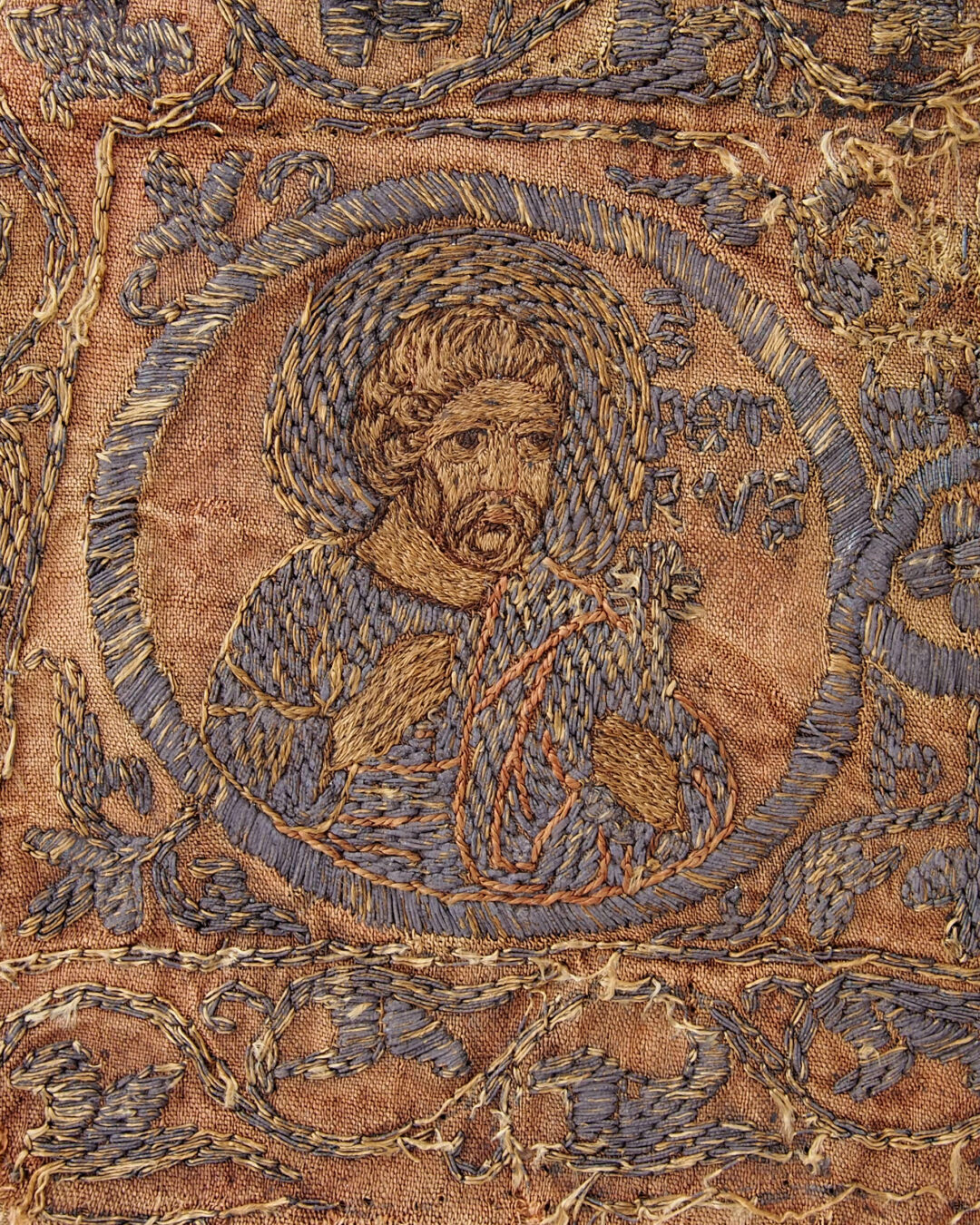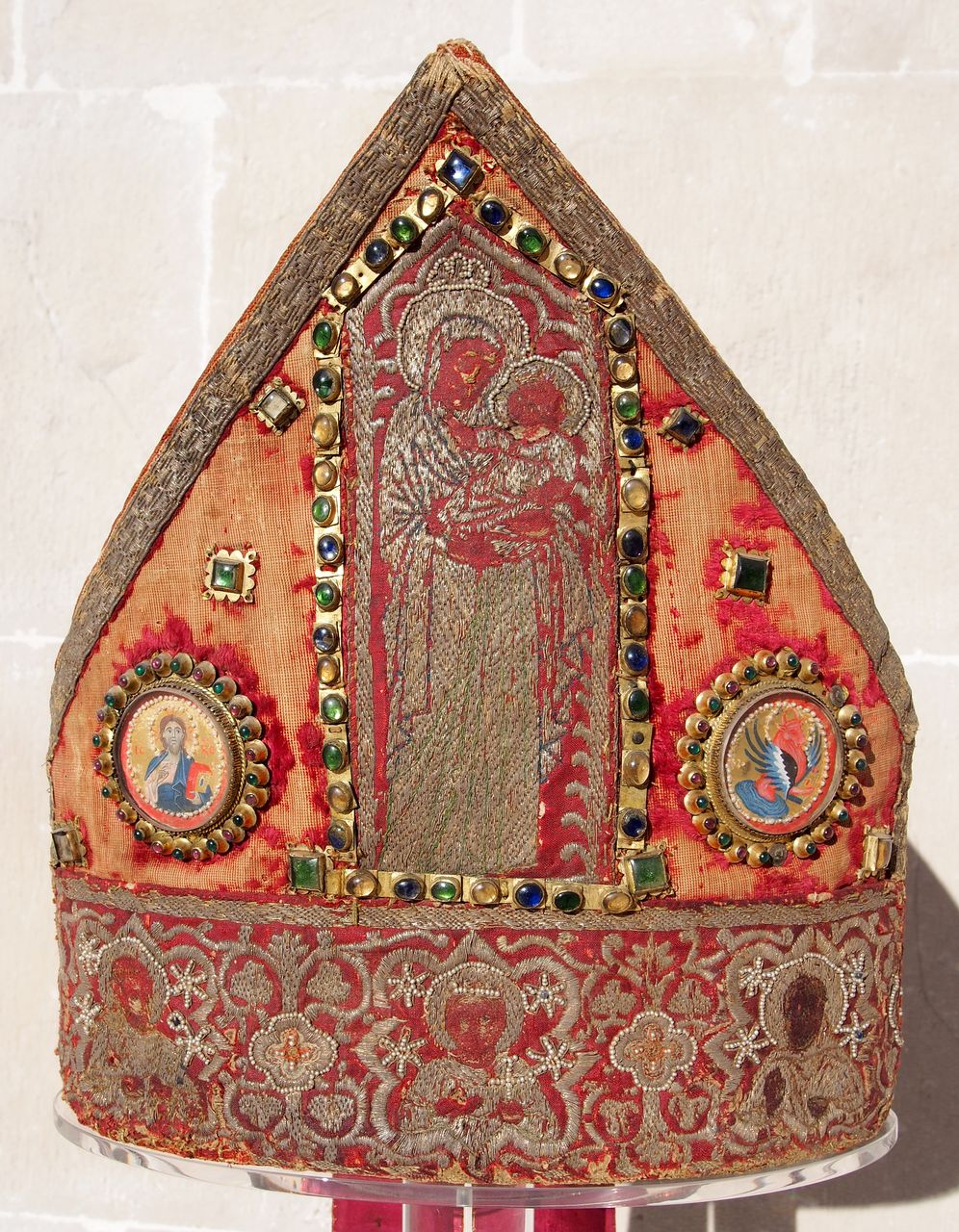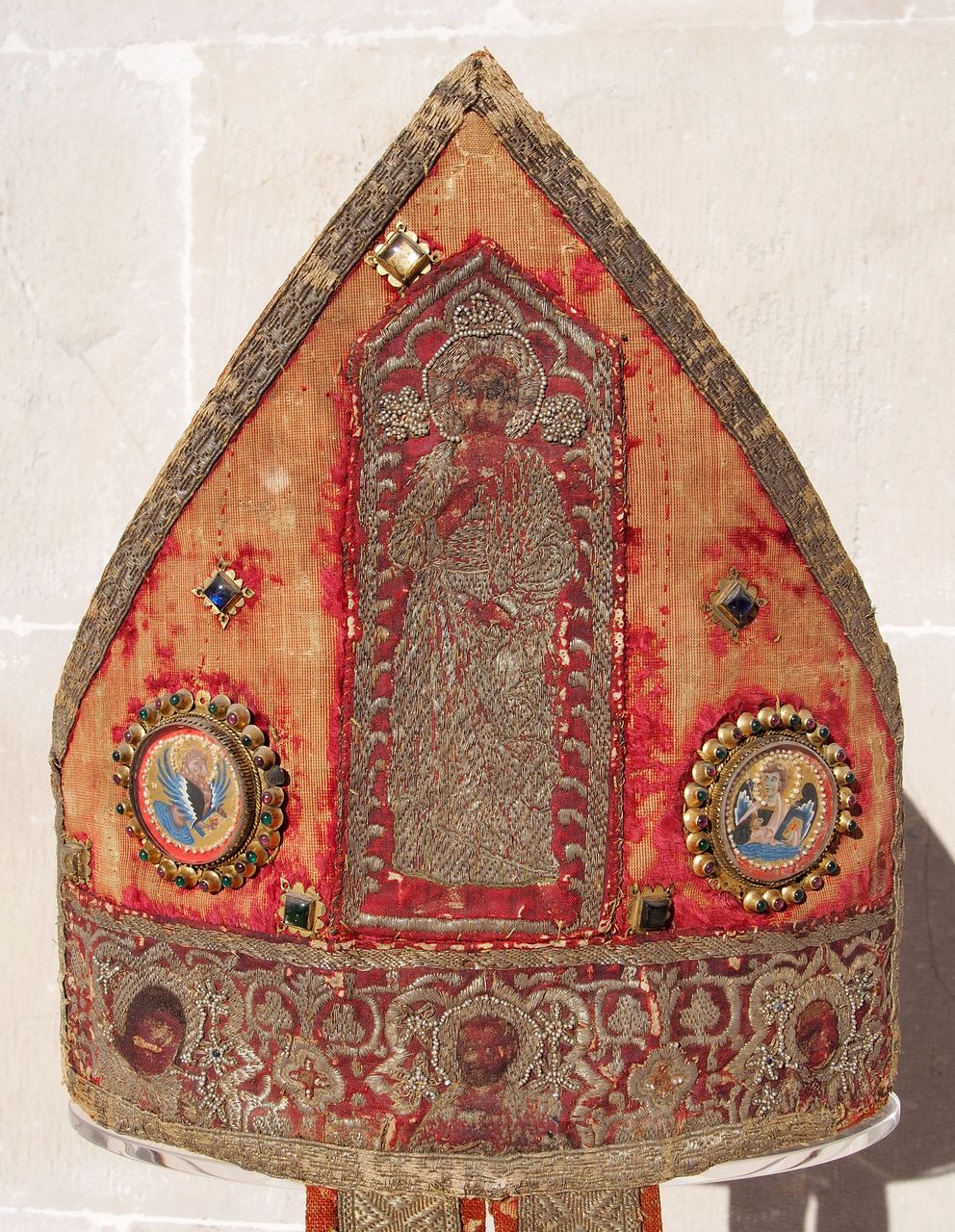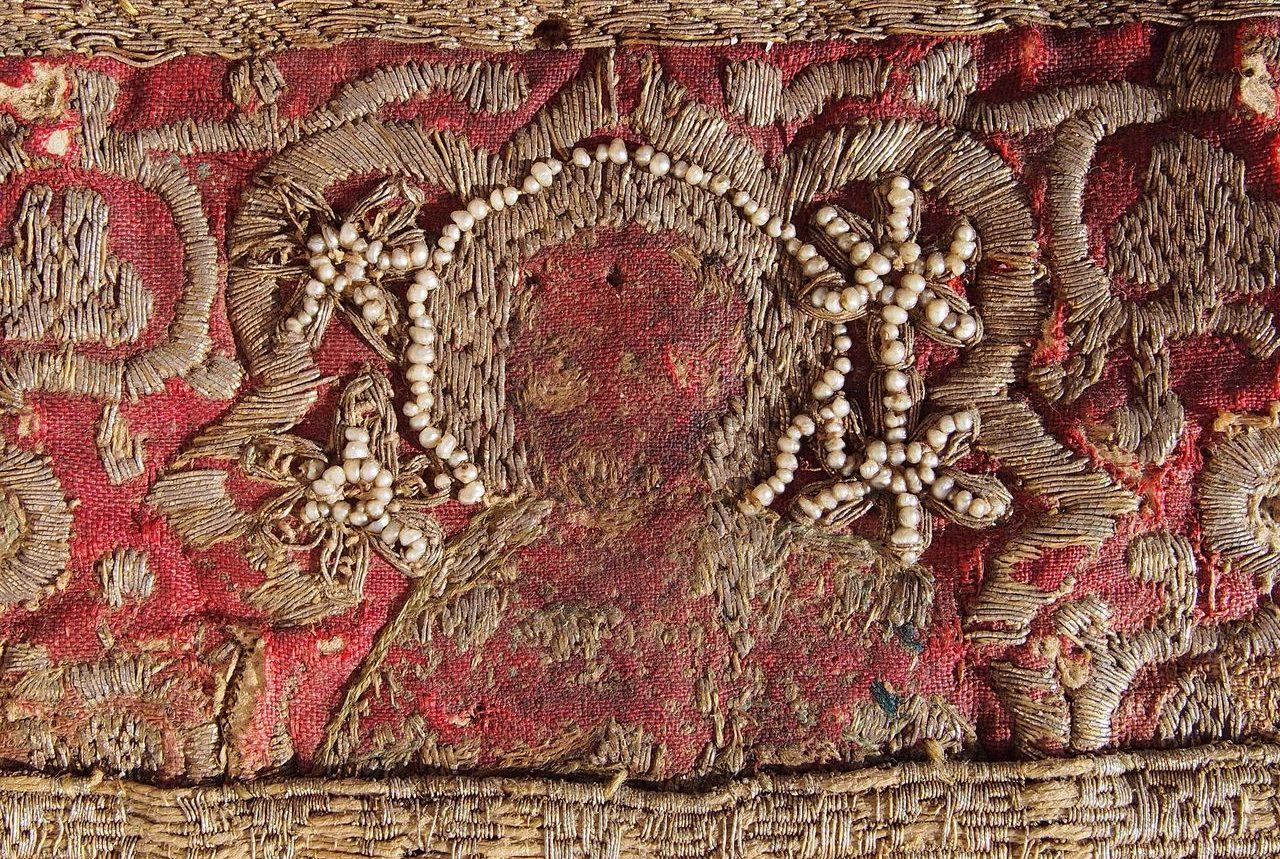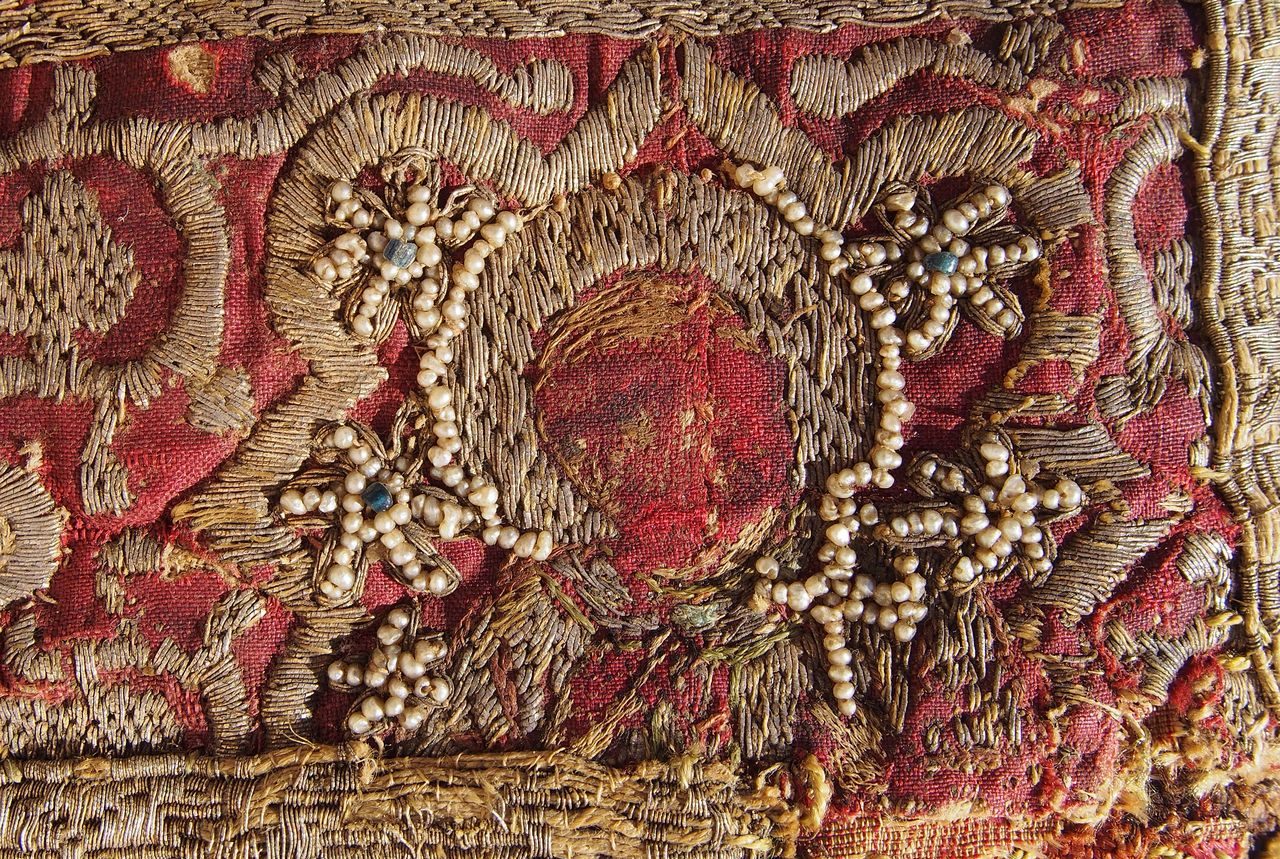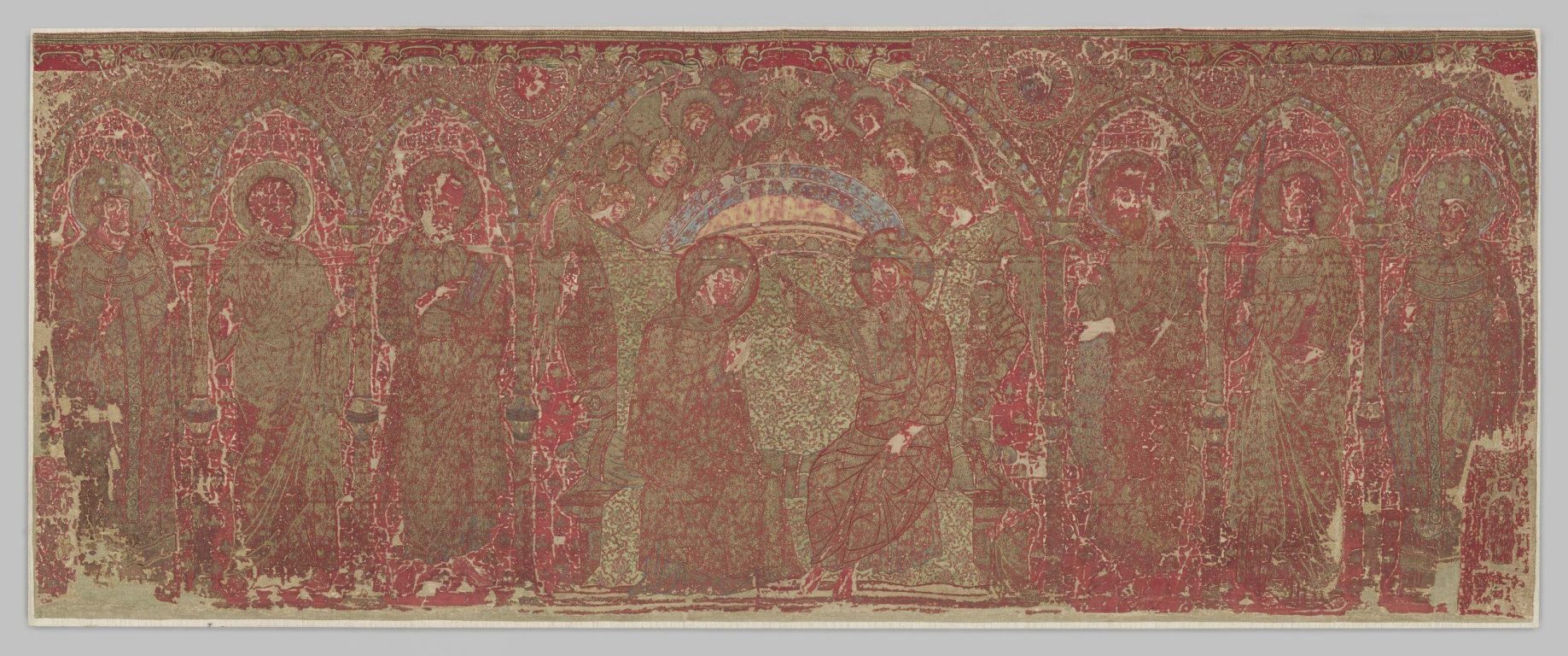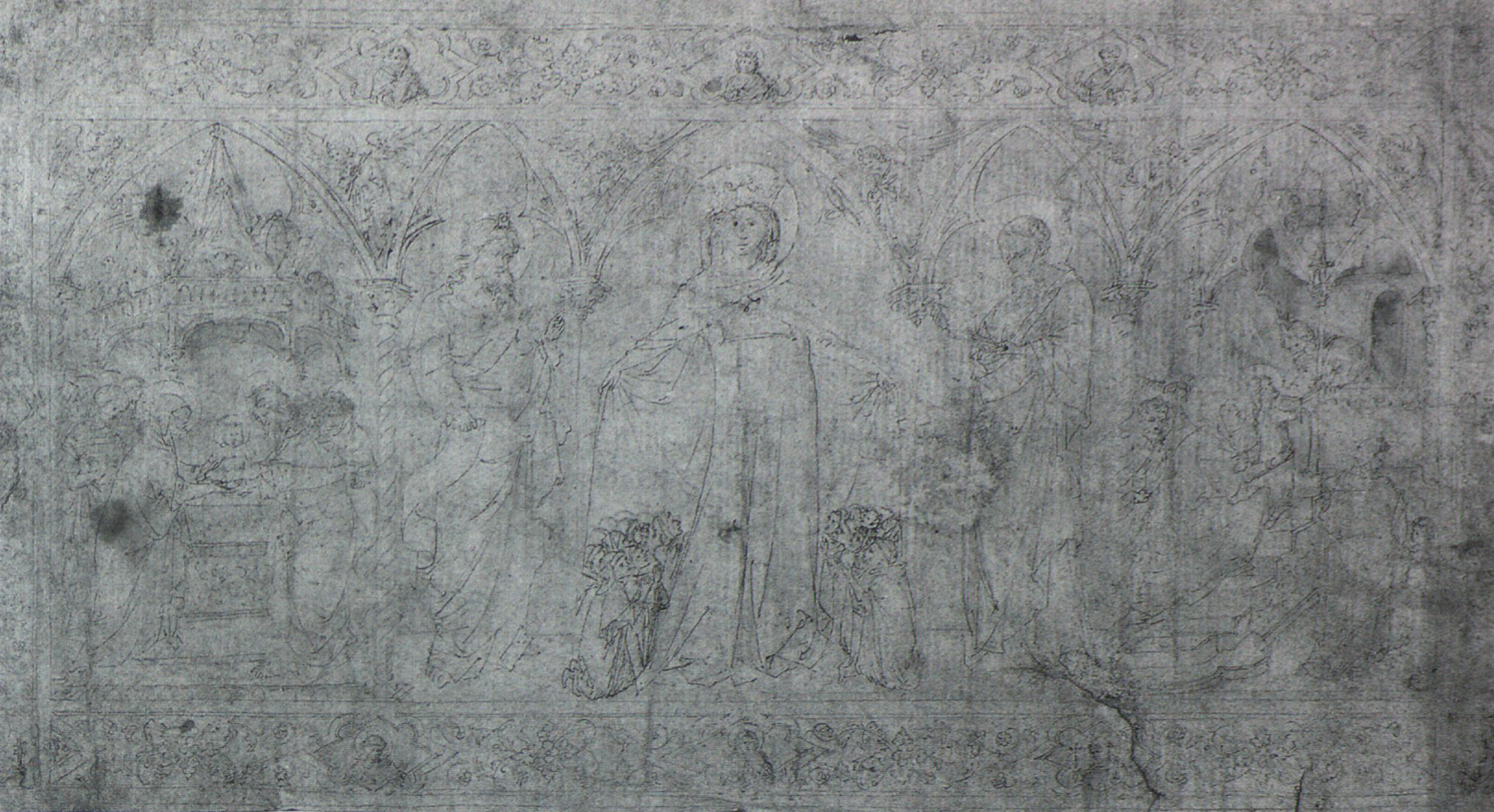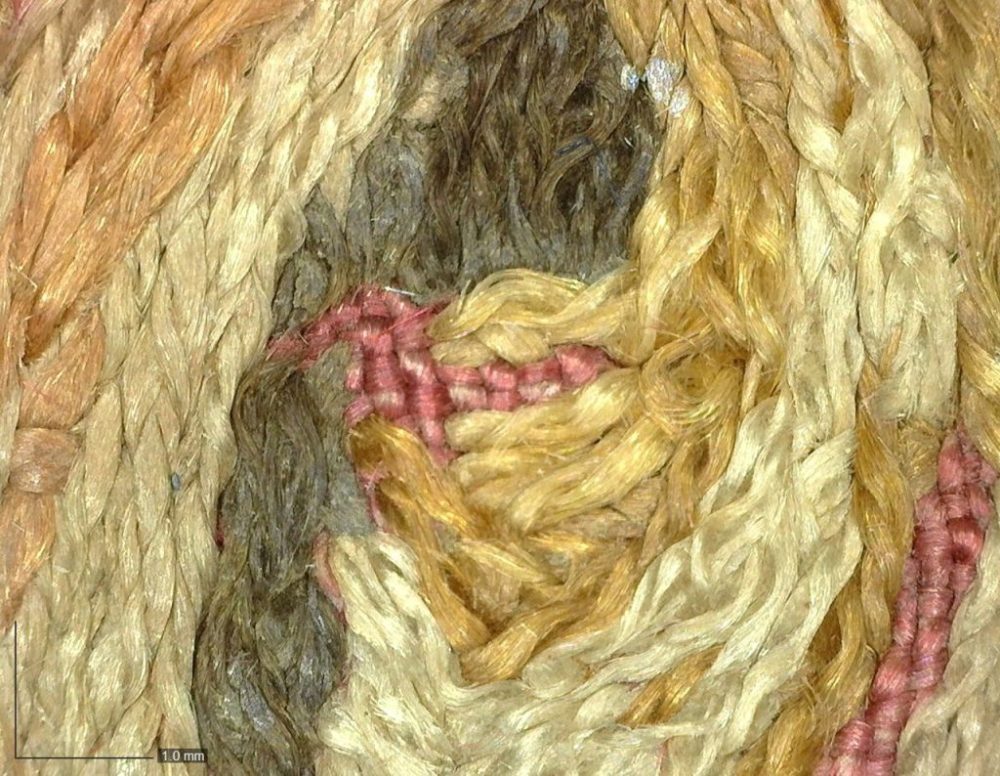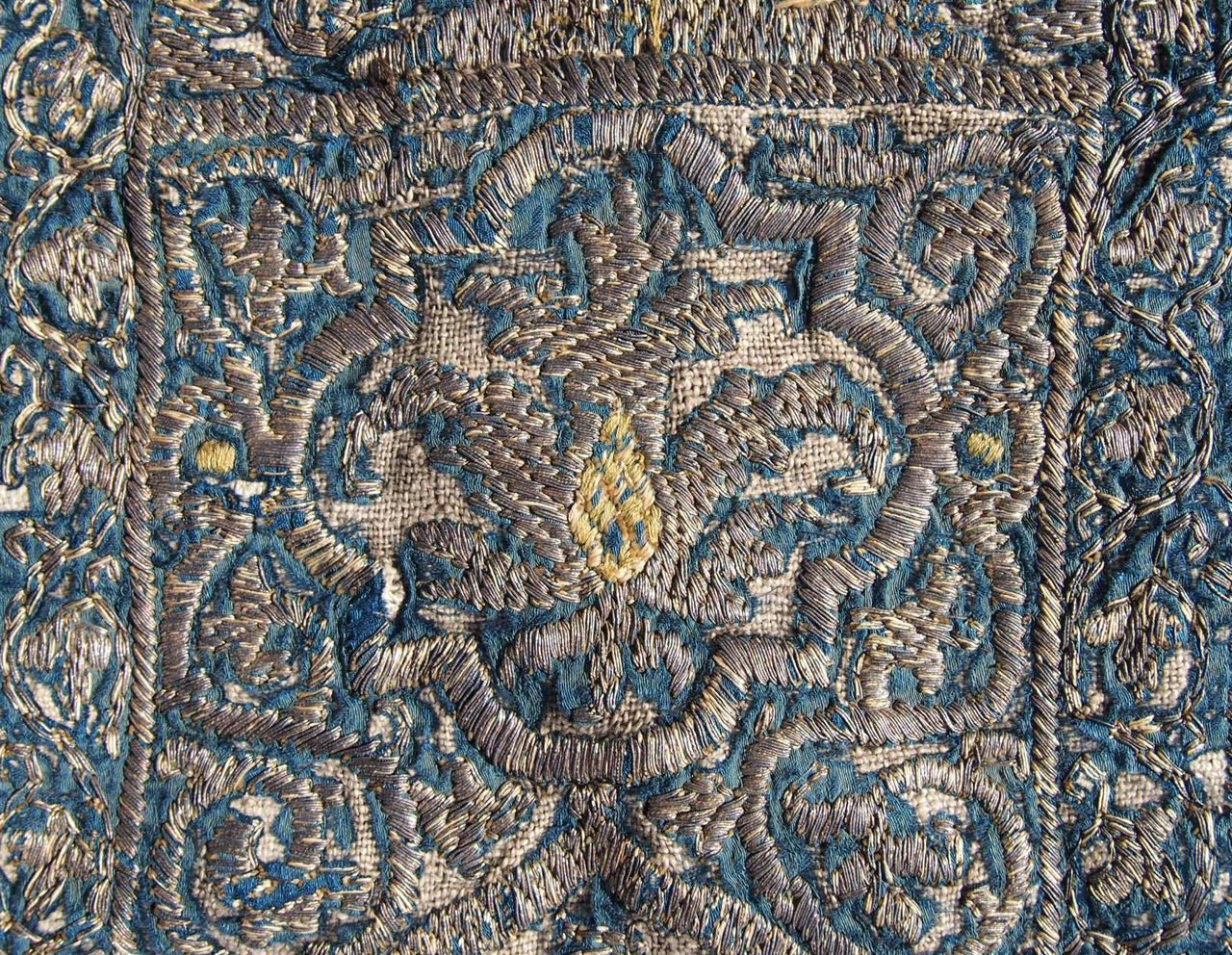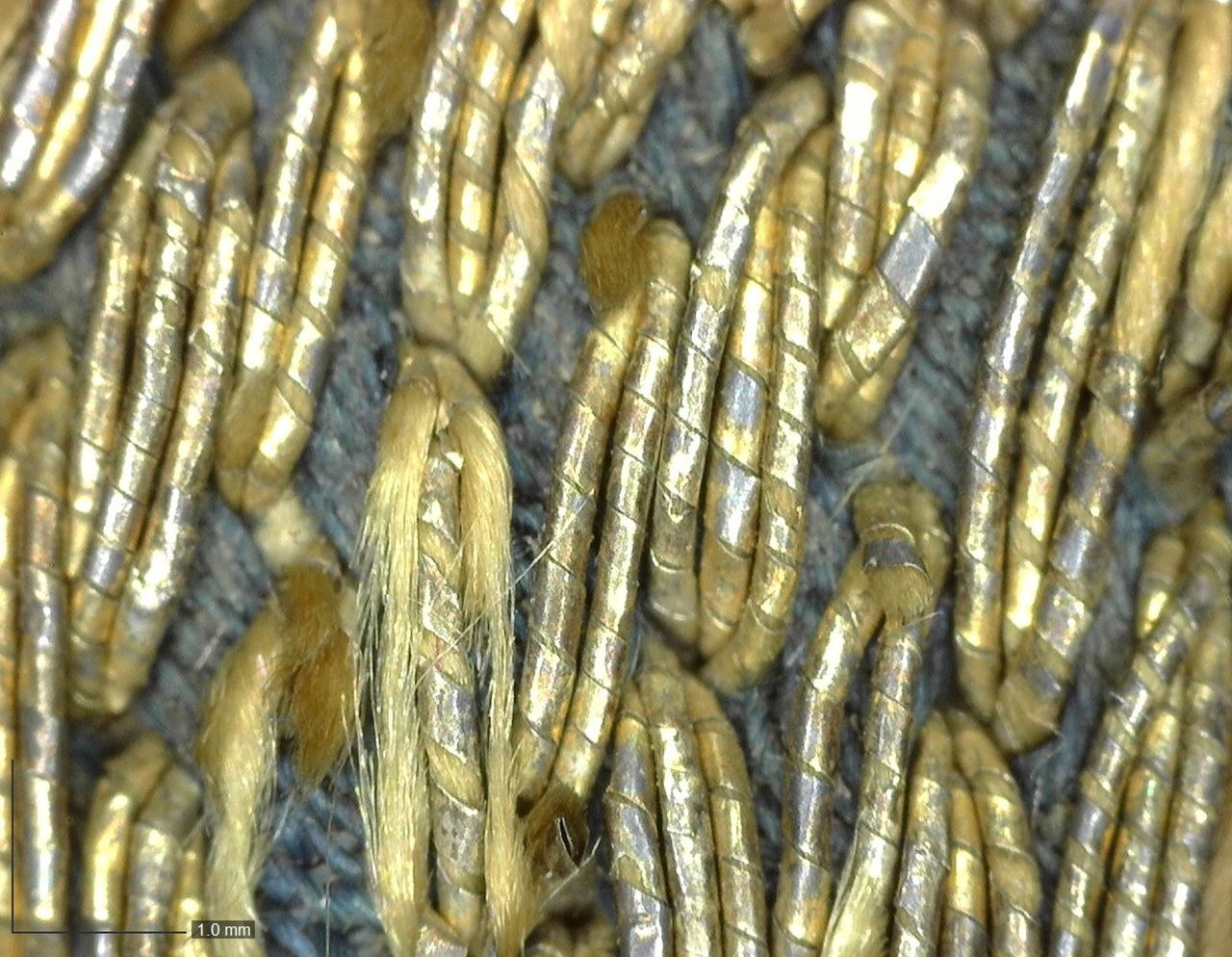Contents
DANIJEL CIKOVIĆ
iva jazbec tomaić
Introduction
iva jazbec tomaić
Opus Venetum
DANIJEL CIKOVIĆ
Masterpiece of Venetian Embroidery: The Veglia Altar Frontal
valentina baradel
The Hands Behind the Preparatory Drawing
iva jazbec tomaić
Revealing the Secrets of the Art of Embroidery
DANIJEL CIKOVIĆ
iva jazbec tomaić
Mapping of the 14th
Century Venetian Embroidery
Introduction
Silk fabrics with embroidered decors made with threads of precious metals were one of the most suggestive symbols of extreme luxury and an indicator of the social status of the members of medieval elites. Their purpose was always to decorate representative venues or clothes. The production of luxury items of this kind during the Middle Ages, as well as later, was related exclusively to the most developed European centres. Consequently, we can distinguish several significant embroidery centres from the Middle Ages and early modern period whose creations are known today as, for example, opus anglicanum, opus fiorentinum and opus teutonicum.
In a context of relatively scarce scientific contributions and secretiveness of the museum and church spaces, the real challenge is to shed light onto the embroidery production in Venice during the 14th century, one of the least researched art production chapters of this cultural metropolis of the Adriatic. Therefore, the exceptional skills and craftsmanship, the quality of materials used and preparatory drawings that made these items striking and unique in the context of European medieval embroidery centres, remained almost unrecognized.
DANIJEL CIKOVIĆ
IVA JAZBEC TOMAIĆ
Opus Venetum
The origins of professional embroidery practice in Venice can be traced in the context of the growing Venetian silk industry in the 13th century. The expensive silks — de Venetiis, as well as those decorated using the embroidery technique — opus venetum, are mentioned in numerous church inventories of the 13th and 14th centuries throughout Europe, such as those from the St. Peter’s Basilica in Rome, St. Paul’s Cathedral in London and the Papal court in Avignon. The limited number of items belonging to this heritage witness the embroidery activity in Venice during the 14th century which was certainly very rich and, above all, professional.
Although very little is known about the organization and activities of the Venetian embroidery workshops in the 14th century, according to the preserved items it can be assumed that there was a production of less complex compositions such as bands with figurative decorations for liturgical vestments (orphreys). The preparatory drawings for the creation of such compositions were attentively kept in the workshops, and then the details were adapted to individual commissions.
The scarce number of preserved art pieces transcending repetitive production is considered particularly valuable. These were created upon exclusive commissions using complex and individualized preparatory drawings, often made by renowned painting workshops.
The monumental altar frontal from the Victoria and Albert Museum originally made for Krk Cathedral, which can be considered without any doubt a masterpiece of the Venetian Gothic embroidery production, certainly belongs among these masterpieces. The altar frontal was embroidered following the design of the most prominent Venetian artist of the 14th century, Paolo Veneziano (around 1290 – 1358/62), and given the complexity and mastery of performance, it can be assumed that the master himself oversaw the execution of this unique artwork.
IVA JAZBEC TOMAIĆ
Masterpiece of Venetian Embroidery: The Veglia Altar Frontal
The monumental altar frontal (107 x 277 cm) made of crimson silk and adorned with eight figures of saints embroidered with golden threads is mentioned for the first time in the oldest inventory list of liturgical vestments and paraments of the Cathedral of the Assumption of the Blessed Virgin Mary in Krk dating back in 1500. The Archbishop of Zadar, Giovanni Robobello noted the following: Uno bello palio da Altaro grando in seta cremesina cum octo figure longe uno brazzo cum diversi Sancti lavorati cum lago de oro fino non roto.
Under a series of Gothic arcades, the Coronation of the Virgin Mary and a series of angels are shown in the central field, while other niches from left to right depict the patron of the town and of the diocese, St. Quirinus of Sescia, St. Peter, St. John the Evangelist, St. John the Baptist, St. Paul and St. Gaudentius, patron of the nearby diocese of Osor. Embroidered at the right side of the foot of the throne is the figure of the patron, a bishop in pontifical ornate, kneeling with folded hands.
The latest contribution to the understanding of the artistic value and context of this masterpiece is the identification of its patron and the proposal of redating. Based on the stylistic comparison with a series of Paolo’s artworks and the analysis of the chronotaxis of the bishops of Krk, it can be concluded that the altar frontal was executed upon commission of Bishop John II, at the beginning of his service, during the sixth decade of the 14th century. Bishop John II, possibly a member of the family of the Counts of Krk, is the best-documented bishop of Krk of the 14th century, and his reputation is also witnessed by the fact that he was buried in a privileged position, in the very presbytery in front of the cathedral’s high altar.
Considering the wider context, the commissioning of this artwork was made in very complex historical circumstances. Namely, despite many years of political tensions between Louis I (1326 – 1382), King of Hungary and Croatia, and the Venetian Republic, patrons from the eastern Adriatic towns — communes, regardless of the political affiliation of their municipalities, apparently procured continuously luxurious art in Venice.
Danijel Ciković

The Hands Behind the Preparatory Drawing
In Venice in the 14th century, painters’ workshops produced a wide range of artefacts. Although what has survived today would suggest otherwise, panel paintings of different types and sizes were only a part of the workshop’s activities. Painters were engaged in a variety of commissions, such as – to name a few – creation of illuminations for luxury manuscripts, pictorial finishing of sculptures or other kinds of objects, including processional banners, or even design of decorations for the Republic’s most important feasts. It is therefore not surprising that painters could also be called upon to provide models for compositions that would later be transferred into other media by professional workshops. This is the case with the stained-glass windows mentioned in the document written by the merchant Oliviero Forzetta and associated with the name of the painter Marco, Paolo Veneziano’s brother, or the embroidered altar frontals, for which, exceptionally, one preparatory drawing attributed to the painter Lorenzo Veneziano still survives.
The Veglia altar frontal, now in the Victoria and Albert Museum in London, belongs to this type of artworks created by the collaboration of different workshops and is one of the most remarkable works of embroidery in terms of size and technical quality. While Paolo Veneziano, the leader of the Venetian painting of the 14th century, was the author of the preparatory drawing, the material execution of the artefact was entrusted to a professional embroidery workshop, also from Venice.
Although the painter’s drawing has not survived, several elements allow the altar frontal to be associated with Paolo’s oeuvre. The Coronation of the Virgin, for example, is strikingly similar to that of Santa Chiara polyptych. Also, the Gothic loggia, which frames the composition, is in close dialogue with the elegant wooden frames of the painter’s polyptychs. However, it is above all the high stylistic quality of the design, the attention to ornamental details, and the drapery’s elegance that makes it easy to recognize Paolo Veneziano as the author of the preparatory drawing. Paolo’s work was rendered very precisely by the embroiderers, who paid great attention to transferring the drawing into embroidery without making any changes and maintaining the quality of the model. This aspect suggests a close collaboration between the painter and the professional embroidery workshop.
VALENTINA BARADEL
Revealing the Secrets of the Art of Embroidery
For the realization of complex projects such as the Veglia altar frontal, several specialized masters who worked together in a well-organized embroidery workshop had to be engaged. Very few written documents about the secrets of their craft and especially about the creation process of the luxurious and monumental embroidered compositions have been preserved. A key source of information regarding the techniques used for creating and transferring the preparatory drawing to the textile surface is the treatise written by the Florentine painter Cennino Cennini (1370 – 1427), Il Libro dell’Arte at the end of the 14th century. In the CLXIV chapter entitled How to design on cloth or canvas for the use of embroiderers (itl. Come si dee disegnare in tela o in zendado per servigio de’ricamatori) Cennini describes the procedure of drawing with charcoals directly onto a well stretched silk cloth that needs to be embroidered. Therefore, data obtained by research and analysis of material types, as well as embroidery techniques of preserved works of art is considered extremely valuable.
Particular attention was paid to the process of transferring the precious preparatory drawing to the textile. Such a template, drawn prior to the embroidered composition, had to be made directly on a silk cloth or paper and then transferred to the textile. The outlines of the preparatory drawing are drawn probably using a charcoal pencil, as described by Cennini, can also be seen on the silk surface of the Veglia altar frontal, mainly in the area where the saints’ faces are, where the silky threads disappeared due to deterioration. Just below the top layer of red silk taffeta, there is a paper used to further strengthen the embroidered composition, and finally, the base layer made of linen cloth.
Precious metals threads cover almost entirely the silk base layer of the Venetian embroidered compositions from the 14th century. Only minor parts of the composition have been created using silk threads and, although they have completely disappeared in certain parts, the exceptional quality and precision of embroidery are certainly visible. The embroidered faces of the saints and angels made with silk threads are especially astonishing, revealing the almost painterly skill of applying punto raso and punto spaccato embroidery techniques.
The composition is dominated by the metal filé threads with a gilded and silver lamella embroidered using the demanding technique punto affondato. The peculiarity of this technique consists in drawing metal threads using the threads of other material through the base fabric and fixing them on the back. These couching threads are not visible on the surface of the embroidered item, allowing the shaping of uniformed gilded or silver surfaces of the decor.
IVA JAZBEC TOMAIĆ
Mapping of the 14th Century Venetian Embroidery
Of the undoubtedly numerous items that came from the Venetian embroidering workshops of the 14th century, only a small part has been preserved to this day, so their identification and mapping is set as a priority in the research of this topic. On the basis of stylistic and technical characteristics, it is currently possible to attribute a number of objects with figural decoration to the Venetian embroidery heritage of the 14th century, most of which have been preserved in the Republic of Croatia or were originally made for patrons from the eastern coast of the Adriatic.
It sounds somewhat unbelievable, but not a single example has been preserved in the city of Venice, while the geographically closest to the production center is the preserved Banner of St. Fosca, which is kept in the Museo Provinciale on the islet of Torcello. The banner was created in 1366 for the Confraternity of St. Fosca, as evidenced by the inscription on the item itself, and it is the only precisely dated sample. Two more items have been preserved in the area of the Apennine Peninsula, the miter in the Museo Cristiano e Tesoro del Duomo in Cividale del Friuli and the altar frontal in the Museo Diocesano of the Cathedral of St. Michael the Archangel in Albenga, although it was created at a later point, i.e. at the beginning of the 15th century.
On the eastern coast of the Adriatic, however, several objects belonging to this group have been preserved: the altar frontal in the parish church of St. Stephen in Dobrinj, the altar frontal in the Victoria and Albert Museum, and originally from the Cathedral of the Assumption of the Blessed Virgin Mary in Krk, a fragment of the altar frontal with the depiction of St. Peter and embroidered ribbons with figures of saints in the Museum of Arts and Crafts in Zagreb, originally from the parish church of St. Philip and Jacob in Grobnik, altar frontal and eight rectangular fragments with ornamental decoration and busts of saints in the Permanent Exhibition of Sacred Art in Zadar, altar frontal in the Iparművészeti Múzeum in Budapest, originally from the Church of St. Chrysogonus in Zadar, a miter in the Treasury of the Cathedral of St. Lawrence in Trogir, fragments of episcopal gloves in the Treasury of the Cathedral of St. Domnius in Split and sixteen busts preserved on rectangular fragments sewn to two dalmatics in the Abbatial Treasury in Korčula.
Also attributed to Venetian embroiderers are a bursa with a depiction of Christ Pantocrator in the Victoria and Albert Museum and fragments of embroidered friezes with vegetable ornament and saintly figures in the Iparművészeti Múzeum in Budapest and in the Keir Collection at the Dallas Museum of Art.


